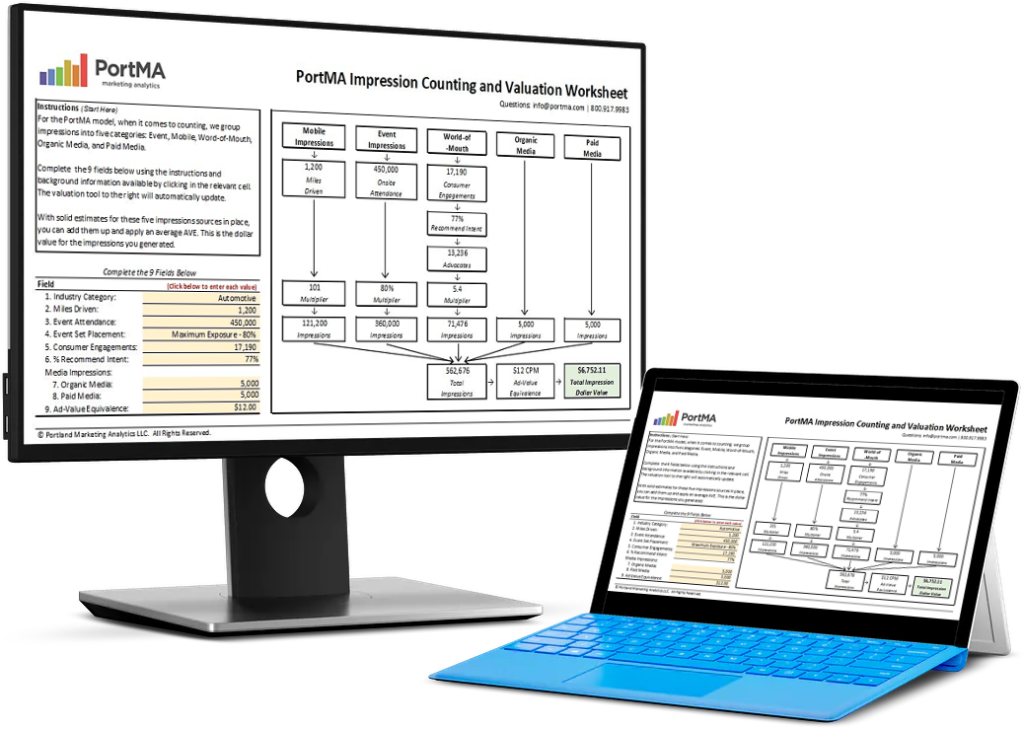
In our last two posts, we talked about two of three questions that we believe are the foundations of measuring experiential marketing. First, we make sure we are reaching the right person. Secondly, we looked at how often we are creating intent where it didn’t previously exist.
Our third question is about producing an optimal mix. “Under what circumstances am I creating value and maximizing ROI for the brand?”
Estimated reading time: 4 minutes
Three Questions to Answer
How well did you do that? Did you efficiently reach the right kind of people and then create an impact on them that was incremental? How well you do that versus what you spent is the ROI. That is really the driver, the key third question in our mix. Because remember, our first question was, “How often are we reaching the right kind of people?” The second question is, “Am I creating intent where it didn’t previously exist?” And the third is, “Under what circumstances am I creating value and maximizing ROI for the brand?”
That is so crucial because the right ROI model will bring the reach efficiency and the reach quality in alignment with the impact that you generated.
ROI as an Index Measure
Cross-reference the impact you generated with the expense that you put forth to do that, creating an outcome delivered to you as an index measure that allows you to assess all of that. ROI as an index measure can be applied to all the segments that define your experiential marketing campaign: the venues you chose, the people you reached, and even the day of the week or the time of day.
You can segment ROI by all of those things and start to see, from an index perspective, where you are creating the maximum value. When modeled correctly, ROI will let you then deconstruct your campaign when it’s less than you thought or would like to see. Then, you are able to find out where specifically am I bleeding money.
(You can listen to the full podcast episode below.)
Measuring Experiential Success
So, are you bleeding because you’re not reaching enough people? Is your ROI low because you’re not reaching the right kind of people? Or, is your ROI low because you’re not creating an impact when you reached anybody?
The answer is not black and white to any of those questions. The answer is a million shades of gray. As an index score (a ratio measure), ROI allows you to see the gradation of your answers and gives you a clear picture of success. If you’re below 100, you know that ROI is negative. It’s very premature for me to say that is a success because there are very legitimate reasons why an ROI would be negative. This is because much of experiential marketing is not done to make money in the short term.
It’s done to educate or to execute a sponsorship agreement. It’s done for all kinds of reasons that relate to a brand’s health and a brand’s success.
Comparing Different Campaigns
With a calculated ROI, you have that immediate indicator of whether or not the cost of the campaign is being paid for by itself and to what degree that’s happening. You also get all the variations of the campaign and how that trains you.
Under what circumstances am I creating value and maximizing ROI for the brand?
We can look at scenarios where you are at a state fair versus a guerrilla intercept, and you can see the state fair is delivering twice the return for you. While it’s delivering twice the return, you can see it’s happening because you’re reaching so many more people, not because you’re reaching more targeted people.
With that guerrilla intercept, you’re reaching a better target of the right kind of person and you’re having a strong impact. You’re just not reaching enough of them. Because you can deconstruct it in that way, you can start to really build strategy, and a roadmap, to where better marketing is going to come from in the future.
Conclusion
Those are the three questions we recommend you superimpose on any data collection analysis and reporting process related to experiential marketing. It is kind of a secret. It relates to all of marketing, but for experiential, it certainly fits very well.
How often am I reaching the right kind of person? Am I creating intent where it didn’t previously exist? Am I doing this in a way that’s generating a positive ROI for the brand and under what circumstances is that ROI strongest? Those are the three questions we champion and the reasons why.
Further Reading

Download the Free Spreadsheet Tool
CALCULATE THE DOLLAR VALUE OF EVENT IMPRESSIONS
PortMA Impression Counting and Valuation Worksheet
Download this spreadsheet and complete the fields for your campaign to get a clear count of your activation impressions translated into a Dollar Value of Marketing
Impression Spreadsheet
